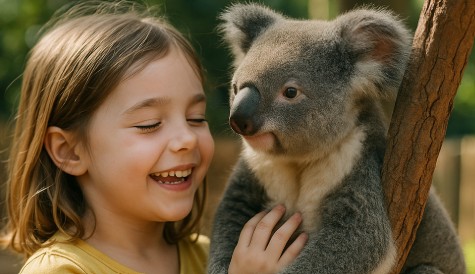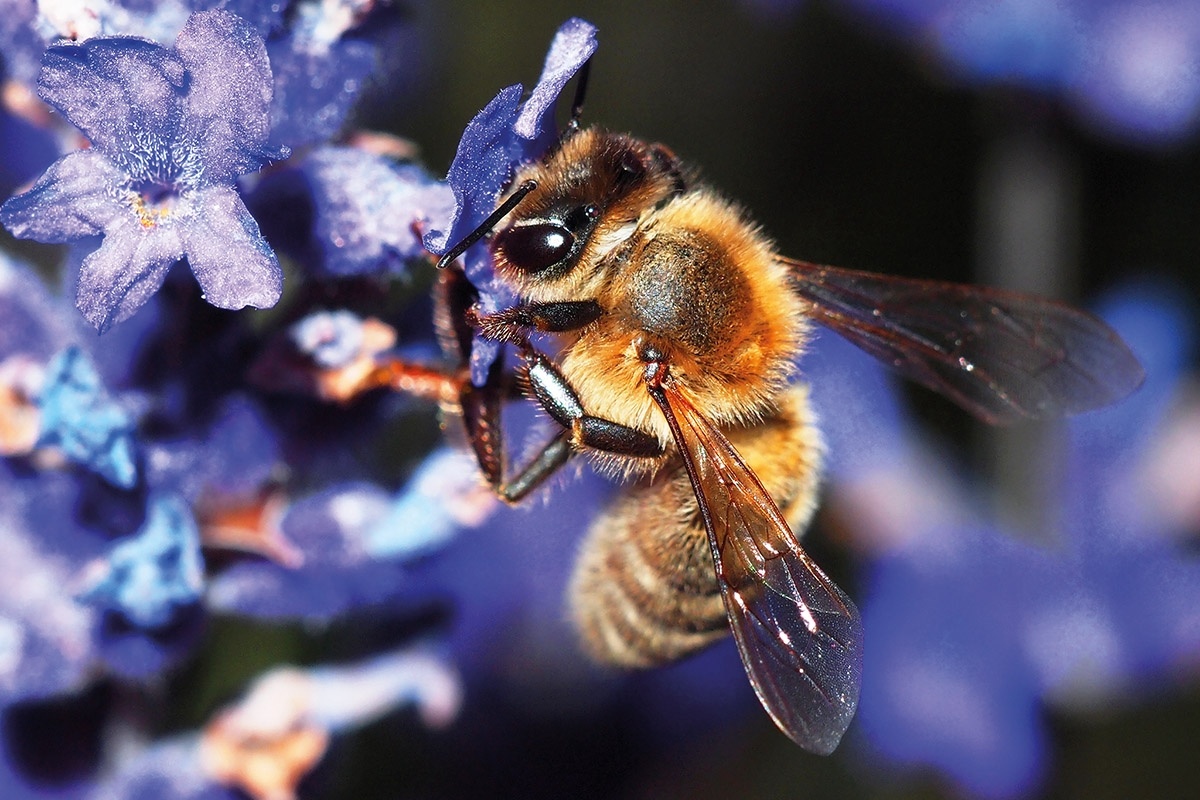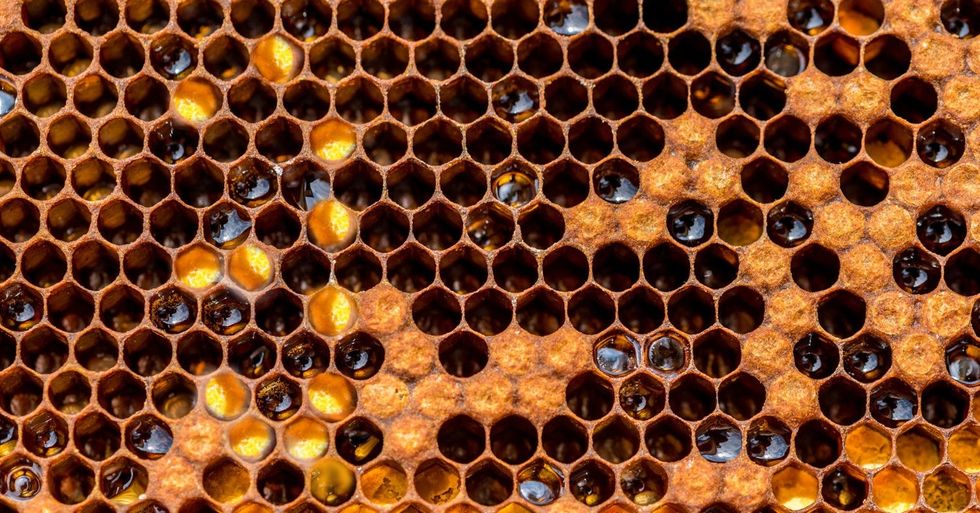
10 Incredible Facts About Bees

geographical.co.uk

In 2018, the UN declared May 20th “World Bee Day,” which means it’s the perfect occasion to appreciate bees for all they do.
Bees are incredible and intelligent creatures that live shockingly complicated lives, but they’re also vital to the survival of the natural world–and to the survival of humans, too. There are about 25,000 species of bees in the world (though honeybees are the best known), and each and every one helps pollinate our crops, playing a vital role in our health and survival and in the health of our global ecosystems. Here are some fascinating facts about bees’ strange lives.
1. Bees’ brains can age in reverse
We already knew that linear time isn’t real, but bees have always been living in total defiance of time. Bees’ brain chemistry is linked to the job they’re doing, so when older bees start performing a task usually reserved for a younger bee, their brains actually start aging in reverse. They’re just like Benjamin Button, but real. Human scientists are currently researching this process, which could potentially teach us how to reverse the effects of dementia, so maybe… Bees hold the secret to eternal life?
2. Bees’ brains work like serial killers
Bees’ habits have actually helped forensic researchers track serial killers due to similarities in their behavioral patterns. Bees tend to collect pollen close to their hives but far away enough so predators can’t find the hive. Similarly, serial killers tend to commit crimes close to home, but far away enough that their activities can’t be traced to them. Scientists have studied this “buffer zone,” using it to improve computer police models that traced criminals.
3. Honeybees communicate through complicated dances and specific smells
Bees utilize an incredibly complicated system of gestures, dances, and symbolic movements to communicate with other bees. Every time a bee goes out on a mission, they have to communicate their findings to other bees, which they do using a “waggle dance” and other gestures. In 1973, zoologist Karl von Frisch won the Nobel for his book The Dance Language and Orientation of Bees, which explored the intricacies of these movements. Apparently, specific speeds and angles that correspond to the location of the sun indicate different locations that help other bees pinpoint the exact location of food. The “waggle dance” resembles an infinity symbol, and there’s also a “sickle dance” that indicates the relative distance of food from the hive.
The Waggle Dance | Inside the Animal Mind | BBCwww.youtube.com
Bees also communicate using odors and scents they secrete. Bees have incredible senses of smell and can differentiate between hundreds of flowers.
4. Drone bees only exist to mate
In the human world, women might frequently be objectified and viewed only as sex objects by men, but it’s the exact opposite in the bee world, where male drone bees only exist in order to mate and die. Drones have no stingers and do no work; they just mate with the queen when it’s time to do so and then (usually) immediately die. If they don’t die, then they’re likely to be kicked out of the hive in the winter months when food grows scarce.
5. Worker bees have different jobs depending on their ages
Bee life is incredibly precise and regimented. At 1-2 days old, worker bees clean their cells. At 3-5 days old they feed older bees. At 6-11 days old they feed younger bees. At 12-17 days, they produce wax and remove corpses from the hive (bees are fastidiously neat, it turns out). At 18-21 days, they guard hive entrances. At 22 days they graduate and spend the next twenty or so days of their lives flying around and collecting pollen.
6. Bees do a ridiculous amount of work for very little payoff
During their lifetimes, worker bees will typically fly 90,000 miles (or three times around the globe). They beat their wings around 200 times per second, and they often visit two to five thousand flowers per day. Yet it takes around 2 million flower visits to produce a single one-pound jar of honey.
7. Bees have a special place in human folklore and mythology
Bees and humans have a unique connection (or at least, humans love to project our stories onto bees).
In ancient folklore, bees were often thought of as sacred insects that had the ability to fly between the underworld and our own world. According to the Homeric Hymn of Apollo, the god Apollo received the gift of prophecy from three goddesses who had human faces but the bodies of bees.
Bees are fairly connected to goddesses and priestesses, with bees often appearing in connection with the goddess or healer archetype, and hallucinogenic honey has long been linked to higher states of consciousness.
Hunting for Hallucinogenic Honey in 360°www.youtube.com
The Celts believed that bees were messengers between realms, and they also believed that humans’ souls transformed into bees during trances, thus allowing people to walk between worlds. According to Welsh folklore, it was customary for heads of families to report deaths (in whispers) to their local beehives; and during funerals, hives would always be turned around. In Egyptian mythology, bees were said to be guides that helped humans on their way to the underworld.
Bees also seem to be intertwined with stories of creation and human development. According to the San people of the Kalahari Desert, a bee once carried a mantis across a river so it could survive. The exhausted bee planted a seed in the mantis’s body and died, and the seed grew to become the first human. In many Hindu myths, bees are symbols of nirvana and fully enlightened beings are portrayed as bees perched on top of flowers.
8. Queen bees fight each other to the death—and live insane lives
There can be only one queen bee. Queen bees have incredibly powerful stingers that can be used over and over again, and rival virgin queens will use these stingers to fight each other to the death until one is victorious.
Potential queens spend their early years locked inside special cells sealed with beeswax. Before a queen is born, the old queen usually leaves with a swarm to start a new hive. When the new queen is born, she leaves the hive to mate with 12-20 drones, then lays over 2,000 eggs per day.
If a queen becomes infertile or dies prematurely, worker bees will create an “emergency queen” by flooding new larvae with royal jelly, which results in a new, albeit typically smaller and less prolific queen.
9. Bees are extremely profitable and vital to our agricultural industry
Bees add $12 to $19 billion to the agricultural industry each year just due to their pollinating abilities. Their pollination is vital to the survival of many plants and forests, and about one-third of the food we humans eat can grow thanks to the help of bees. Without bees, we’d lose most of the fruits and vegetables we eat. (And of course, we’d also lose our beloved honey).
10. Bees are at risk, but could help us fight climate change and hunger
The bee population is rapidly decreasing due to a combination of environmental destruction, climate change, and disease. (Sound familiar?)
Bees are also threatened by deforestation and agricultural disruption, pollution, pesticides, and climate change, all of which can irreparably damage their carefully coordinated lifestyles. The main causes of bee death are habitat destruction, pesticides, and changing global temperatures. Ecologists advise that we immediately ban the most dangerous pesticides and restore ecological agriculture and wild habitats so that bees can continue doing what they do best.
Bees are also currently being threatened by a disease called American Foulbrood, which can destroy entire colonies with one fell swoop. Currently, antibiotics are being administered to hives in an effort to stop this disease.
The good news is that bees can also help fight climate change, as they’re vital to the preservation of our ecosystems and they help sustain entire food chains. With more bees and healthier natural landscapes, ecosystems will flourish and humans will have more food security. The answer isn’t just as simple as farming more honeybees, though. We need wild bees just as much as honeybees, and each plays their own important role in keeping the world running.



